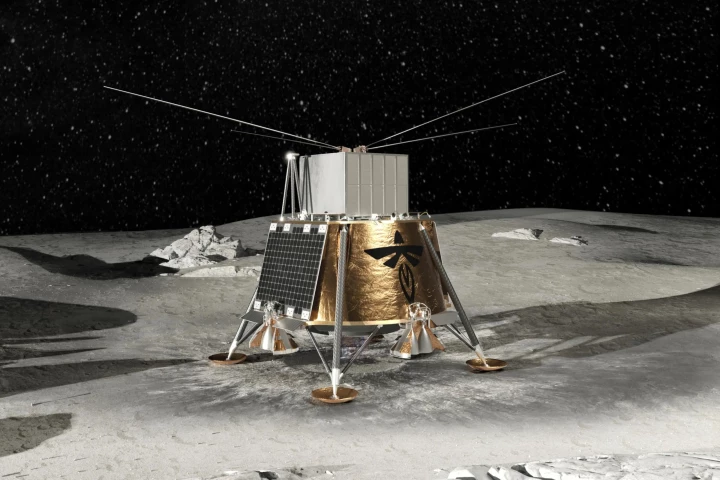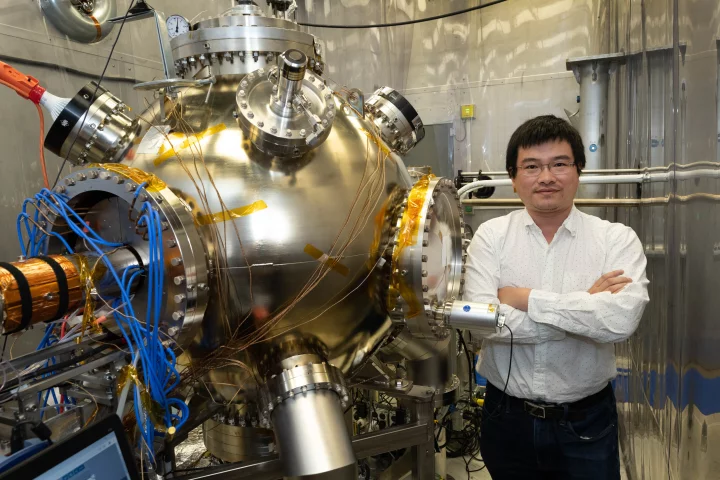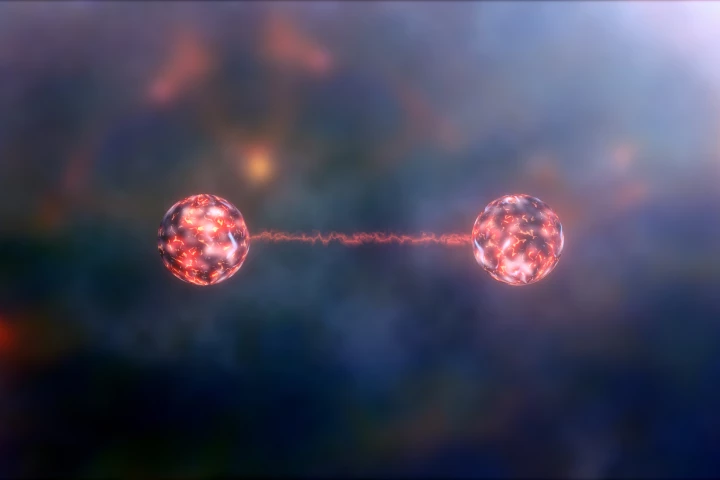Brookhaven National Laboratory
-
Radio astronomers like a bit of peace and quiet, so they're sending an historic first radio telescope to the Moon. To block out Earthside radio signals, the Lunar Surface Electromagnetics Experiment (LuSEE-Night) will set up shop on the far side of the Moon.
-
A new experiment has demonstrated something that sounds physically impossible – light itself casting a shadow. If you manipulate a laser just right, then hit it side-on with another light source, it’s possible to create this bizarre optical effect.
-
On New York's Long Island, scientists are building an ambitious machine to tease apart the mysteries held inside atomic nuclei. A major component of that system is the world's highest voltage electron gun and it's just aced a six-month test.
-
Physicists have created the heaviest clumps of antimatter particles ever seen. Known as antihyperhydrogen-4, this strange stuff could help us solve some of the most puzzling physics mysteries.
-
In an effort to mitigate human-caused climate warming, scientists are focused on ways to remove carbon dioxide from the atmosphere. One of the more novel ways to do this has just been announced by scientists employing a smart dual-method process.
-
Physicists at Brookhaven National Laboratory have discovered a completely new type of quantum entanglement, the spooky phenomenon that binds particles across any distance. This allowed scientists to peer inside nuclei in more detail than ever before.
-
While plants such as soybeans are major sources of biofuel, they're grown on land that could otherwise be used for food crops. With that problem in mind, scientists have genetically engineered oil-producing duckweed that could be grown in wastewater.
-
Engineers at Brookhaven National Laboratory have designed a strange new X-ray microscope that takes advantage of the spooky world of quantum physics to “ghost image” biomolecules in high resolution but at a lower radiation dose.
-
Whether they're on smartphone displays or TV screens, reflections can be a nuisance. Scientists working at Brookhaven National Laboratory, however, have reportedly found a way of almost eliminating them. It involves treating regular glass surfaces by etching tiny nanoscale cones into them.
-
While not quite as significant as the one-time accidental discovery of penicillin, 2016 did have its share of chance findings in the scientific community. Here we take a look at five of them.
-
A lucky discovery may offer a cheap and simple way of making very delicate graphene much more durable in real-world conditions, paving the way for its use in mass produced electronics.
-
Researchers have discovered how the bombardier beetle is capable of producing a unique defensive mechanism, whereby the beetle induces a chemical explosion inside it's shell, creating a boiling, toxic liquid which is then sprayed at its aggressor.
Load More











